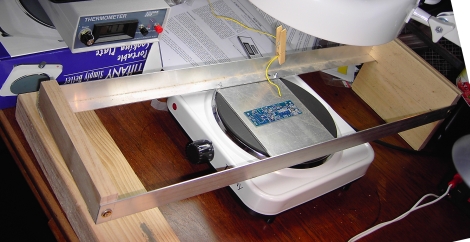
We were sent [Dr. Offset’s] most recent project, a kid’s toy that is half sculpture/half noisemaker, but 100% cool. The device uses several 555 Timers and is his entry into the 555 Design Contest, which wraps up in just a few days. To really enjoy his creation, you need to suspend disbelief for a moment, and indulge the space fantasy he creates. In other words, let yourself be a kid again, if only for a few minutes.
What he has built is a containment unit for an alien life form found during an outer space exploratory mission. The creature has fused its organic bits with electronic components in order to survive in the stark, empty world it used to call home. The containment unit allows you to zap the “bug” with various frequencies to see how it reacts. The “bug” is light sensitive, so it always offers a varying experience, day or night.
It’s definitely one of the most artistically creative entries into the 555 Design Contest we have seen yet. Continue reading to see a thorough walkthrough and demonstration of his project.
[Thanks Rich Decibels]
















